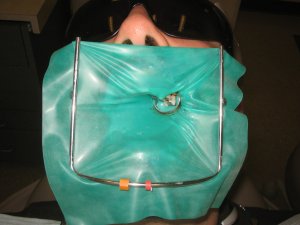Have you been told you need endodontic root canal treatment to save a decaying tooth? It’s not something any of us look forward to; the root canal procedure can be quite long and – if you don’t have insurance – rather costly.
However, getting a root filling to restore the tooth is preferable to getting it extracted. Think of it as a little short-term discomfort for long-term gain.
In this article we will answer some of the most commonly asked questions including:
- What is a root canal?
- What does the procedure involve?
- How long do root canals take?
- Does a root canal hurt?
- Are root canals safe?
- How long will it take to recover?
- How much does root canal treatment cost in the US, with and without insurance?
We can’t promise to make the procedure any more enjoyable, but at least you’ll know what to expect after a root canal.
In This Article
What is root canal treatment?
The root canal system is located in the roots of each of your teeth. A tooth root infection, if left untreated, can cause irreparable damage to the tooth and even spread to other parts of the body.
The root canal procedure, an endodontic treatment sometimes referred to as a ‘root filling’ or just a ‘root canal’, involves drilling right inside the tooth to remove decay and infection deep down in the roots.
This work may be performed by a general dentist or by an endodontist, who specializes in treating the inside of a tooth.
Once the root is treated, the root and tooth are filled to help preserve the remaining tooth. Teeth that have undergone root treatment are more fragile than healthy teeth. Your dentist may, therefore, recommend fitting a dental crown to help prevent further damage.
The tooth structure
Before we get into the details of what this procedure involves, let’s take a look at the structure of a tooth.
The crown is the part that sticks up above the gum line. The section level with the gum line is called the neck, and the part below the gum is the root. The tooth root can be twice as long as the crown.
A root may split into two canals, meaning that teeth usually have up to four root canals each. In some rare cases, six or seven roots have been found in one molar!
The hard white coating on the outside of the tooth crown is called enamel. This is the part you need to protect by brushing and flossing daily. A build-up of bacteria on the teeth resulting from poor oral hygiene can lead to dental caries (tooth decay).
If tooth decay erodes even a small amount of enamel, it leaves the rest of the tooth susceptible to infection. Once bacteria start eating away at the soft dental pulp inside the tooth it can quickly spread down the tooth root(s) through the root canal system. From here it can reach the surrounding bone and gum tissue.
Untreated root canal infections are likely to lead to an oral abscess.
When do you need a root canal?
An infected root canal usually develops quite slowly, from untreated tooth decay which has led to pulpitis. When a tooth has undergone multiple restorative procedures, or when a crown or filling is loose or faulty, there is a higher chance of root infection. In some cases, the infection can develop more quickly, for example, if you experience trauma or get a cracked or chipped tooth.
If you have regular dental checkups your dentist should be able to identify and treat any tooth decay before it penetrates the root system. However, if you haven’t been to the dentist for a while you may find the infection has already spread and you need root canal therapy to save the tooth.
Symptoms that indicate that tooth pulp has become infected may include sensitivity to hot/cold or sweets, pain, swelling, pain to biting or pressure, and a bad taste in the mouth. However, sometimes no symptoms are apparent and you may be unaware of any problem until a checkup. (This is just one of the many reasons to make and keep your 6-month appointments.) These dental checkups and cleanings can prevent small problems from becoming big issues.
Keep in mind that not all types of teeth pain mean you need a root canal. If you are in pain, it is your body’s way of telling you that something is not right. Call and make an appointment with your dentist if you notice anything out of the norm with your teeth or mouth.
Dr. Robert Berry, Mountain Aire Dentistry
Root canal infection symptoms
Initial signs need a root canal include:

- You have sensitive teeth or experience pain when consuming hot or cold food and drink
- It hurts to bite down
- One of your teeth is loose
If you ignore these root canal symptoms, you may find they disappear over time. This isn’t because the infection has healed itself; it just means it has destroyed the nerves contained in the dental pulp so you can no longer feel it.
Eventually, you’ll notice these symptoms returning, possibly along with the following signs that the infection has spread much further and that you have a dead tooth:
- Swollen gums around the infected tooth
- Swelling in your face
- Pus oozing from your tooth or gum
- Discoloration of the tooth
Going to the dentist as soon as you experience any kind of tooth pain should help prevent the infection from spreading to this more serious stage. The tooth root won’t heal itself, and the longer you leave it the less chance there is of root canal treatment being successful.
You also shouldn’t rely on antibiotics to clear a root canal infection without any other dental treatment. Although you may be given antibiotics as part of your dental work, medicine alone won’t be enough to make your tooth healthy again.
Emergency root canal near me
If your root canal pain comes on suddenly and over-the-counter painkillers have no effect you should book an emergency dentist appointment. They may not perform an emergency root canal on the spot but can at least give you stronger root canal pain relief until you are able to have the treatment you need.
To find an emergency endodontist near you, call 866-383-0748. You’ll be connected to a dentists in your area right away.
Do I need a root canal or extraction?
The main priority of your dentist should be to preserve your natural teeth for as long as possible, rather than extracting them. When a tooth is removed it can affect how you eat and put extra strain on the surrounding teeth. Over time the jaw bone at the extraction site can recede, causing changes to your facial appearance.

An extraction may cost less than root treatment, but then you’ll need to think about replacing the missing tooth, which will cost you more overall.
But if the bacterial infection has spread through a lot of the tooth and the remaining structure is not enough to support a filling or crown, extraction may be the only option.
Your dentist or root canal specialist will usually begin by taking x-rays of the affected area to determine the extent of the infected root canal. From these images, they will be able to see how many canals the affected tooth has, where they are positioned, and how many of them require treatment. They can then plan your procedure and let you know what to expect.
Note that if you have an infected wisdom tooth, there are certain situations where your dentist may opt to extract it rather than perform a root filling. If the tooth hasn’t fully erupted, for example, or is in a position that’s difficult to clean, your dentist may recommend extraction.
How long does a root canal take?
It’s possible to complete a simple root canal in 30 to 60 minutes. More complex procedures, or those involving multiple teeth, will take longer. In this case, you may need multiple visits.
Root canal treatment time depends on a number of factors:
- Which tooth is being treated
- The number of roots and canals, and their shape
- The amount of infected tissue
- Which tools your dentist uses
Discuss this with your dentist ahead of time so you know what to expect. Modern advances in dentistry mean it is getting easier to complete the root canal process quickly and with minimal discomfort.
How long does treatment last?
Endodontics is a common dental practice with a relatively high success rate. Around 85% of treatments last for at least 8-10 years if the patient maintains good oral hygiene. Many go on to last a lifetime. Giving up smoking (if you currently smoke) will help prolong the effectiveness of any dental work while improving the overall state of your teeth.
If you experience tooth pain years after a root canal, it may be possible to perform a root canal re-treatment and preserve the tooth for even longer.
One side-effect of root treatment is the tooth may darken over time. However, with modern endodontic techniques, this is becoming less common. If you do experience discoloration after root therapy, especially with a front tooth, you may consider getting it chemically whitened so it’s not as obvious.
Root canal procedure
There are five main root canal treatment steps needed to restore a deeply infected tooth. These usually take place over one or two visits to your dentist. The number of visits required will depend on which tooth is being treated and the complexity of its root system.
Dental x-rays will give your dentist a good idea of the length of your visit(s). However, they can’t know for certain how complex the treatment will be until they actually access your tooth roots.
Front tooth root canals tend to be more straightforward because they are easier to access and the canals are generally straighter and wider. This means that a root canal on a front tooth is usually quicker to complete than on a tooth at the back of the mouth. However, your dentist can’t know for certain how complex the treatment will be until they actually access your tooth roots.
The exact root canal treatment procedure will vary slightly from one clinic to another, but here is a basic outline of the steps involved:
Preparation
After taking x-rays to plan your treatment, your dentist or endodontist will administer a local anesthetic, a form of dental sedation. This numbs the area being treated so you shouldn’t feel any pain.

It’s good practice for dentists to fit a waterproof dental dam (cofferdam) while doing root canal work. This rubber sheet fits around a single tooth to isolate it from the rest of your mouth.
This serves three purposes:
- It protects the inside of the tooth from bacteria in your saliva
- You can swallow normally during treatment
- If the dentist drops a tool or some debris falls into your mouth, there is no risk of you swallowing it and choking
It’s possible to perform this work without a dental dam, but professional endodontists should use one as a matter of course. When choosing a dentist to treat your infected root canal, ask whether they use a rubber dam to keep the tooth sterile. If not, consider finding one who does.
Opening the tooth
Using a drill, the dentist will make a hole in the top of your tooth (or at the back of a front tooth) through which he can access the pulp chamber and root system. Tiny little files are used to clear away the damaged and dead pulp and nerve tissue from inside the tooth and roots.
Root canals are very thin and are often curved, so it can take some time for the dentist to locate all of the canals and ensure all traces of infected material are removed. They often use special microscopes and bright lighting to help them see right inside the tooth.
If you have an abscess at the end of your tooth root, it will be drained at this point.
Cleaning
Next, the inside of the tooth is cleaned thoroughly using water and an antibacterial solution. Your dentist uses a syringe to squirt the cleaning solution into your tooth, then it is sucked back out. This is repeated several times to ensure the area is completely sterile.
Root shaping
The narrow and irregular shape of root canals makes them difficult to fill properly. Therefore, one of the most important root canal treatment steps is to enlarge and shape each canal in the tooth. There are several reasons why this is necessary:
- It ensures full removal of necrotic pulpal tissue and bacteria from the canal space
- It creates optimum space for the root cleaning process and root filling
- The resulting smooth tooth structure is preferable for long-term preservation
If your dentist uses traditional hand files, this part of the procedure can be very lengthy and require multiple visits. Modern mechanical rotary tools make it faster and more effective.
Using a mechanical rotary tool has a number of benefits over traditional hand files:
- More accurate cleaning and shaping of the canal
- Easier and more accurate filling
- Significant reduction in post-operative sensitivity
- Less discomfort and dental chair time required to finish treatment
- Less risk of damage to the healthy tooth structure
Because of the shorter treatment time and more comfortable recovery, you may wish to select an endodontist near you who will use a rotary tool rather than hand files for your treatment.
Dr. Eyad Tariq
Root filling
If your treatment is too complex to complete in one visit, your dentist will fill the roots with some medication to kill any remaining bacteria. He will then apply a temporary filling to protect the tooth in between visits. This filling is removed when you return to complete your treatment.
Once all the canals have been cleaned and widened, it’s time to permanently fill them. This is often done with a thermoplastic material which, when heated, softens to fit the exact shape of the chamber. Dentists insert a number of thin cones into the canal and then compress them under heat to ensure complete filling.
It’s important that the root canal filling totally fills the space inside the tooth, otherwise, it’s more likely to become re-infected.
Once the roots are filled, the remaining space in the tooth is filled and restored just like a normal filling. This provides an extra seal to protect the roots from any more bacteria.
Crowning (optional)
Because a tooth is more fragile following root treatment, your dentist may recommend you have a root canal and crown. A crown (also called a ‘cap’) is a protective covering often made from porcelain or metal. It covers the entire tooth to protect it from further damage. Now ceramic crowns are also becoming more popular. You can read more about these types of crowns in our article here.
To fit a crown, your dentist first has to shave some of the enamel off the outside of your tooth. They use strong dental glue to keep it in place. Once fixed in place it should feel and function just like a natural tooth. Of course, the root canal and crown cost is greater than just the root treatment, but your dentist will let you know what’s best given the state of your tooth.
Your dentist may wait a few weeks before crowning your tooth, just to be certain that the process was successful and there are no signs of infection after root canal filling. However, you might also get an immediate temporary crown, which you’ll wear until your permanent one is ready.
The video below from the American Association of Endodontists gives a quick summary of the procedure:
Root canal after care
After your procedure is done your endodontist will give you strict aftercare instructions which you need to follow. You should always first follow the aftercare instructions from your endodontist, but the general rules are as follows:
- Take pain medication as instructed
- Wait to eat until the numbness in your mouth wears off
- Don’t bite down or chew on your treated tooth until it is fully restored
- Brush and floss daily like normal
It’s normal to experience tenderness and mild soreness after your procedure, and during root canal recovery time which can last a week or two. However, make sure to contact your endodontist ASAP if you experience:
- Severe pain or pressure that lasts more than a few days
- Visible swelling inside, outside or around your mouth
- An allergic reaction to your medication
- An uneven bite
- Your temporary crown or filling falls out
- The same symptoms you had before your root canal
How much does a root canal cost near me?
The average cost of a root canal will range from $700 to $1,000. The more complex the procedure, the longer it will take and the more it will cost. The cost also depends on whether or not it’s a root canal for a molar (this will cost more) or an incisor (this will cost less.
Dentists and root canal specialists probably won’t be able to give you a fixed root canal price until they have examined your mouth and possibly taken x-rays to assess the condition of your teeth. You may still be able to get an idea of root canal costs by phoning around different clinics though, and it’s worth doing this as prices can vary quite substantially from one to another.

If you need extensive restoration work, you may find it more cost-effective to visit an overseas dentist for your treatment.
Patients from North America usually travel to Mexico or Costa Rica for low-cost dental work. If you live close to the border you can get your teeth done in a day and save hundreds or thousands of dollars in the process.
Cheap root canal near me
If going out of the country isn’t an option, there are other ways to find more affordable treatment. You can begin by asking your dentist if they offer discount plans or payment plans, so you can get reduced-cost treatment, or at least spread your payments out over time in manageable amounts.
Root canal cost with insurance
If you have insurance that covers a root canal, your out of pocket costs may average between $200 and $500.
Many dental insurance plans cover endodontic work to some extent. If you have one, find out what percentage of root canal costs it will cover.
A dental insurance plan may cover part of your treatment costs. We know that dental insurance can be expensive and it can also be difficult to know which plan to choose.
But we are here for you — we’ve created a special comparison tool that shows you the top plans in your area to help guide you in your decision.
It takes just a few seconds to fill in your DOB and zip code, and you’ll see full coverage plans that cover your needs. Get started with the form below!

Is a root canal painful?
Many patients worry about root canal treatment pain and may put off getting the treatment they require because of fear it will hurt. Fortunately, the anesthetic technology used by dentists these days means the procedure can be performed with minimal discomfort. It should feel no different to having a regular filling, except it will take a while longer and your jaw may feel stiff afterwards because you’ve held it open for so long.
For patients experiencing significant root canal pain prior to treatment, endodontic therapy provides considerable relief.
Your dentist will administer anesthetic before starting any work and may “top it up” during longer treatments. Before treatment, you can tell your dentist you will raise your hand if you start to feel uncomfortable at any point
Particularly nervous patients have the option of IV sedative while the work is done. This doesn’t knock you out completely as a general anesthetic would, but it deeply relaxes you so you don’t feel anxious and barely remember the experience.

Managing pain after root canal surgery
Root canal recovery shouldn’t be painful, but your restored tooth may be swollen or sensitive for a few days. During this time you can take ibuprofen or paracetamol to ease any discomfort.
You may find it more comfortable to only eat soft foods until your mouth feels back to normal, especially if you feel pain when biting on the treated tooth.
Yes, patients may experience a little discomfort or pain after root canal treatment, once anaesthesia wears off. This is a side-effect of the root canal cleaning and preparation procedure.
This can last for 1-2 days, but over-the-counter painkillers should relieve any pain.
If you experience continued throbbing pain after taking painkillers or develop severe pain a few days after your root canal, you should contact your dentist straight away. This is a sign of a failed root canal procedure and you may need extra dental care.
Dr. Eyad Tariq
Root canal complications and problems
Despite the relatively high success rate of endodontic treatment, some patients do experience problems. Root canal complications can occur anywhere from a few days to a few years after the initial treatment.
A failed root canal can be the result of:
- The dentist missing a canal during initial treatment
- A canal being incompletely treated (i.e. the tip of the canal left untreated)
- Tissue left inside the tooth
- A fracture to the root
- Leakage of bacteria
If any of these complications arise, your dentist or endodontist will assess your tooth to see whether root canal re-treatment can be performed. The process for this is much the same as the original treatment, although more complicated to perform.
In most cases, the alternative to root canal re-treatment is extraction. Patients who don’t wish to undergo further root canal therapy may instead choose to have the problem tooth replaced with a dental bridge or implant.
If a root canal fails because of re-infection at the tip of the root, it may be possible to perform endodontic surgery. This involves making a small incision in the gum to access the root tip directly. This allows the original structure from previous treatment to remain in place.
If you are concerned you may have root canal failure, contact your dentist as soon as possible. They are trained to recognize the symptoms of a failed root canal, and can determine if you need root canal retreatment. The earlier it is treated, the less opportunity there is for the bacteria to cause more damage.
In the meantime, we’ve compiled a list of complaints patients have after their root canal procedure, along with what you can do in these situations:
- Throbbing pain after root canal: If you have throbbing or severe pain after a root canal, even after taking painkillers, it might mean a failed root canal and you call your dentist immediately.
- Swelling after root canal: Some swelling and pain is normal after a root canal and should go away after several days. If it doesn’t, or the pain gets worse, call your dentist.
- Tooth pain after root canal when biting: Slight discomfort, pain or tenderness is normal after your root canal. However, if you continue to experiencing pain when biting down, it may be because your cap was insufficiently smoothed down. If this is the case, you should call your dentist to fix it, as not attending to the problem could make things worse.
- Tooth pain months after root canal: Your tooth may not heal correctly after your root canal, or it may suffer a fracture or new decay. If you experience pain months later, you should call your dentist.
- Jaw pain after root canal: Wall some tenderness in your jaw is normal, if it doesn’t go away, or gets worse, you need to call your dentist.
- Infection after root canal: Intense and worsening pain more than a week after your procedure may be a sign of an infection, and you should call your dentist.
Root canal specialist near me
If you need a root canal, you can find an endodontist, or root canal specialist in your area by calling 866-383-0748. You’ll be connected with an endodontist near you who can get you the care you need as soon as possible. You can also learn more about endodontists in your region by checking out our full guide to dental services here. Other types of dentists, such as biological dentists, generally do not perform root canals.
Alternatives to root canal
If you’re not keen on getting a root canal, there’s a possibility that you could have other options as well.
Root canal vs implant
An implant isn’t really a root canal alternative, but rather a solution if you end up having to get your tooth extracted. A root canal is a tooth-saving procedure, and if you get one, you won’t need an implant to replace your tooth. Root canals are almost always preferred by dentists if a tooth can be saved because the best thing for your oral health is to keep your original teeth.
Root canal vs extraction
Many patients wonder which is better, a root canal or extraction. It may almost seem easier to get a tooth pulled than to get a root canal. But the truth is, having a tooth extracted should be treated as a worst-case-scenario option. Missing teeth cause a whole host of oral health problems, including bone degradation, difficulties eating, and loss of facial structure. If your dentist says you need an extraction, ask them why they can’t do a root canal.
Dentists are people, too, and they may have a momentary lapse and forget that it’s an option, too. Or they may be operating under unconscious biases, and not offering root canals as an option to their poorer clients or non-White clients as demonstrated by this study. If you suspect your tooth can be saved, you may want to get a second opinion from a dentist you trust.
If you do get a tooth extracted because it can’t be saved by a root canal, ask your dentist about your tooth replacement options, and remember that even though implants cost the most, they are well worth the investment.
Conclusion
Root canal treatment is an effective way to repair a damaged tooth and prolong its life for many years, or even a lifetime. Many people worry that the treatment will be painful, but this really isn’t the case. It may be uncomfortable sitting with your mouth open for so long, but it shouldn’t hurt at all.
Although it’s normal to experience some sensitivity for a day or two after a root filling, you can take painkillers to help with the recovery. If you start to feel pain several days or months after treatment, contact your dentist straight away.
The cost of a root canal in the US can average $700 to $1,000 without insurance.
Remember, regular dental checkups are the best way to pick up on any dental problems before they reach your tooth root. Taking good care of your teeth will help minimise the chances of you needing a root canal filling in the future.
FAQs
How do you know if you need a root canal?
You may need a root canal if you experience persistent pain or if you have a cracked or chipped tooth that leads to an infection. Other symptoms include increased sensitivity to heat or cold. You may also experience swelling around a painful tooth, a bump on the gums and dark tooth discoloration. Additionally, if you know you have decay and you experience pain or sensitivity, that might be a sign that the decay has spread to the nerve and root of your tooth. If you have any of these symptoms, you should seek treatment as soon as possible.
It could be a situation where the body has been compensating for a chronic infection. Our body may be able to keep the pain threshold low enough that it remains undetected — for now. Further examination by X-ray and testing of the teeth may indicate a completely dead or dying nerve in which case a root canal would be recommended.
Another scenario presents itself in the form of a bump near the damaged tooth. This could indicate active infection. Your body may have created a “drain” from the infection to the nearest area of relief. You may not experience pain in this scenario because this “drain” or fistula keeps pressure from building up. Further evaluation is needed to determine the source of the infection and to prevent nearby tissues and structures from being infected.
Dr. Alexander Harris, Vero Dental
Do you need a crown after a root canal?
Crowns reinforce your tooth after a root canal, while also making it functional again. You don’t always need to get a crown after a root canal, but some time of reinforcement is always needed.
Do root canals cause health problems?
No. Root canals do not cause health problems. The claim that root canal treatment makes you more likely to get sick or get cancer is based on a poorly designed study conducted almost 100 years ago. According. to the American Association of Endodontists, there is no scientific evidence that links root canals to getting other diseases.
How long does it take to recover from a root canal?
You may experience pain for 1-2 days after your root canal, but over-the-counter painkillers should relieve any pain. If painkillers don’t help, or you develop severe pain after your root canal procedure, you should contact your dentist right away. This is a sign of a failed root canal procedure and you may need extra dental care. However, if all goes well, you should be fully recovered after a few days.
Can a tooth that needs a root canal heal itself?
No. If you need a root canal, do not wait to see if it will heal itself. By the time a tooth needs a root canal, an infection has spread to the pulp inside of the tooth. An untreated infection can spread to your jaw, and eventually your entire body. Some people think that they no longer need a root canal if their tooth stops hurting. However, this is not a sign that your tooth has healed itself. Instead, this is a sign that the nerves inside your tooth has died and meanwhile, the infection is still present.
Can you drive after a root canal?
You can drive home after a root canal unless you’ve had sedation. If you do have any type of sedation, you’ll need someone to drive you home. Normally sedation isn’t needed during a root canal. You can confirm with your endodontist beforehand.
How can I find a root canal dentist near me?
If you need to find a root canal dentist in your area, you can reach out to your regular dentist or call 866-383-0748. You’ll be connected right away to a dentist in your area.
International Endodontic Journal: Factors influencing the success of conventional root canal therapy—a five-year retrospective study. Consulted 16th October 2020.
AAE.org: Myths About Root Canals. Consulted 16th October 2020.
Journal of Clinical and Experimental Dentistry: Importance of rotary systems in dental care by undergraduate students in patients of a public health service of Belo Horizonte. Consulted 16th October 2020.






